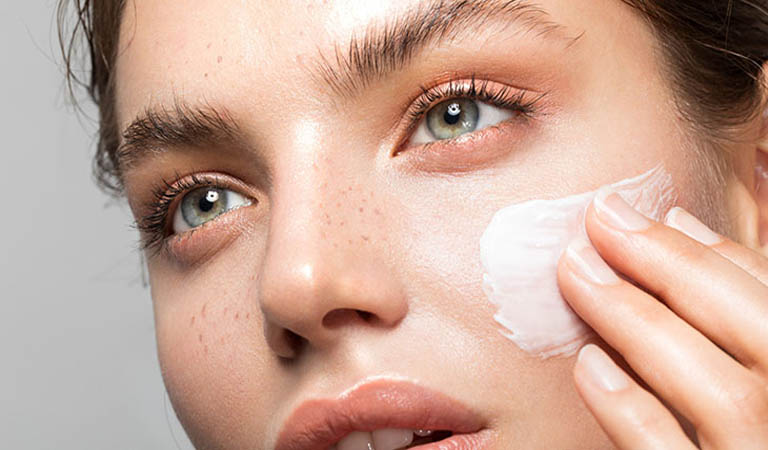COMMON SKIN CONDITIONS IN CHILDREN
Children’s skin is very thin, only about one-fifth as thick as an adult’s skin. Their delicate and sensitive skin, combined with a weaker immune system, makes children more susceptible to damage from external factors that can lead to dermatological conditions. Let’s take a look at some common skin diseases in children:
CONTENT
Heat Rash (Miliaria)
During hot weather, children are prone to heat rash, a simple skin condition that can resolve on its own when the weather cools down. However, if not properly cared for, it can lead to long-term folliculitis.
Heat rash typically appears in patches on areas with high sweat production, such as the chest, back, and forehead, and sometimes in large creases like the armpits and groin. In severe cases, it can cover almost the entire body. The lesions are small pink-red papules, sometimes with tiny vesicles or white pustules. The inflamed skin causes discomfort, making the child feel irritable and itchy. When scratched, the skin can become abraded and prone to secondary bacterial infections.

Atopic Dermatitis (Eczema)
Atopic dermatitis, also known as baby eczema, is a common skin condition in children. It usually starts when the child is 2-3 months old and is characterized by clusters of small blisters on red skin, often appearing on the cheeks, forehead, and chin. The itching makes the child uncomfortable, leading to scratching, which causes the blisters to ooze and increases the risk of secondary infection.
Due to the nature of the condition, baby eczema is difficult to cure completely and tends to persist during the first two years of life. 95% of children outgrow baby eczema by age 2, while 5% develop atopic dermatitis as they grow older.
Hand, Foot, and Mouth Disease
Hand, foot, and mouth disease is an acute contagious viral infection, with over 90% of cases occurring in children. Symptoms appear 3-6 days after exposure to the virus, with early signs including fatigue, mild fever (38 – 38.5°C), sore throat, and runny nose, lasting for a few days. The disease then progresses to the next stage, starting with the appearance of vesicles in the oral mucosa, often on the inside of the cheeks, gums, and sides of the tongue. These small vesicles (2-3mm) form on inflamed, red mucosa. The vesicles in the mouth break quickly, creating painful ulcers that make it difficult to eat and drink. Subsequently, vesicles and blisters appear on the hands, feet, and sometimes on the buttocks.
Patients are contagious through respiratory droplets during the first week of illness.

Impetigo
Impetigo is commonly seen in children, especially during the summer, and is prevalent in developing countries with poor hygiene and densely populated areas.
Impetigo typically appears on exposed skin such as the face, hands, and feet, but can also affect the trunk and other areas of the body. Non-bullous impetigo usually starts as a pinkish patch, progressing to vesicles and bullae that quickly turn pustular. These lesions burst, leaving behind honey-colored crusts. Bullous impetigo begins with small vesicles that enlarge into superficial bullae. These bullae are fragile, containing clear yellow fluid that turns darker over time. The bullae rupture within 1-3 days, leaving moist red lesions with a thin rim of skin around the edges. These lesions heal without scarring.

⚠️ Treating skin diseases in children requires great caution. If you notice any signs of skin conditions in your child, take them to the nearest specialized dermatology clinic for examination.
Do not self-medicate or follow unproven advice about traditional treatments or superstitions, as this can lead to severe and dangerous complications for the child.
Melasma is a common skin condition affecting millions worldwide. Characterized by dark, brown patches on the face, often appearing on the cheeks, forehead, nose, and upper lip, melasma is caused by an overproduction of melanin. While not a serious health concern, melasma can be frustrating and impact self-esteem. Discover effective treatment options and learn how to manage melasma for a more radiant complexion.
Niacinamide and AHA/BHA – Should they be combined and how to use them together for optimal results? Have you ever wondered about these issues? First, let’s quickly go over the standout benefits of these ingredients (by the way, if anyone would like an article on each ingredient, feel free to leave a comment below and let us know).

